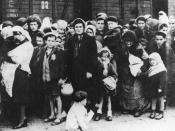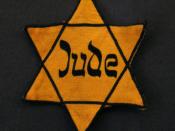Masks have held countless uses and meanings throughout history. Masks have been used in plays, like those of Shakespeare, traditional dances, social gatherings, even as a form of casual or corporal punishment. Although masks have several different uses in different cultural situations, the meaning of the masks is generally the same. Masks are used to conceal an appearance and assume the identity of another. Metaphorically, masks can be used to hide feelings, to protect oneself, and to block out the outside world. Many of these examples are shown in Art Speigelman's Maus.
During Maus, the illustration of masks is made very obvious. The features are pronounced and it is very clear that the characters are wearing masks. The illustration of these masks is not to be ignored- there must be a message hidden beneath them. Speigelman uses masks to represent many different feelings and situations during the course of his father's story of the Holocaust.
These masks are significant symbols which can quite strongly represent certain feelings of the characters many times throughout the story of Art Speigelman's Maus.
Animal masks are used in Maus to show characters disguising themselves to protect against threatening situations. They are also used in figuratively assuming new identities for the characters, and also as a symbol of punishment. Although some examples of masks in Maus portray a mix of a few underlying purposes, the ideas behind the masks generally follows the scheme of the three main ideas.
The most evident use of masks in Maus, protection, begins clearly in the first volume. Vladek, Anja, and other Jewish characters use masks to disguise themselves as Polish. This is the most literal and physical representation of masks throughout the story. Vladek and Anja must hide the fact that they are Jewish, in order to...


